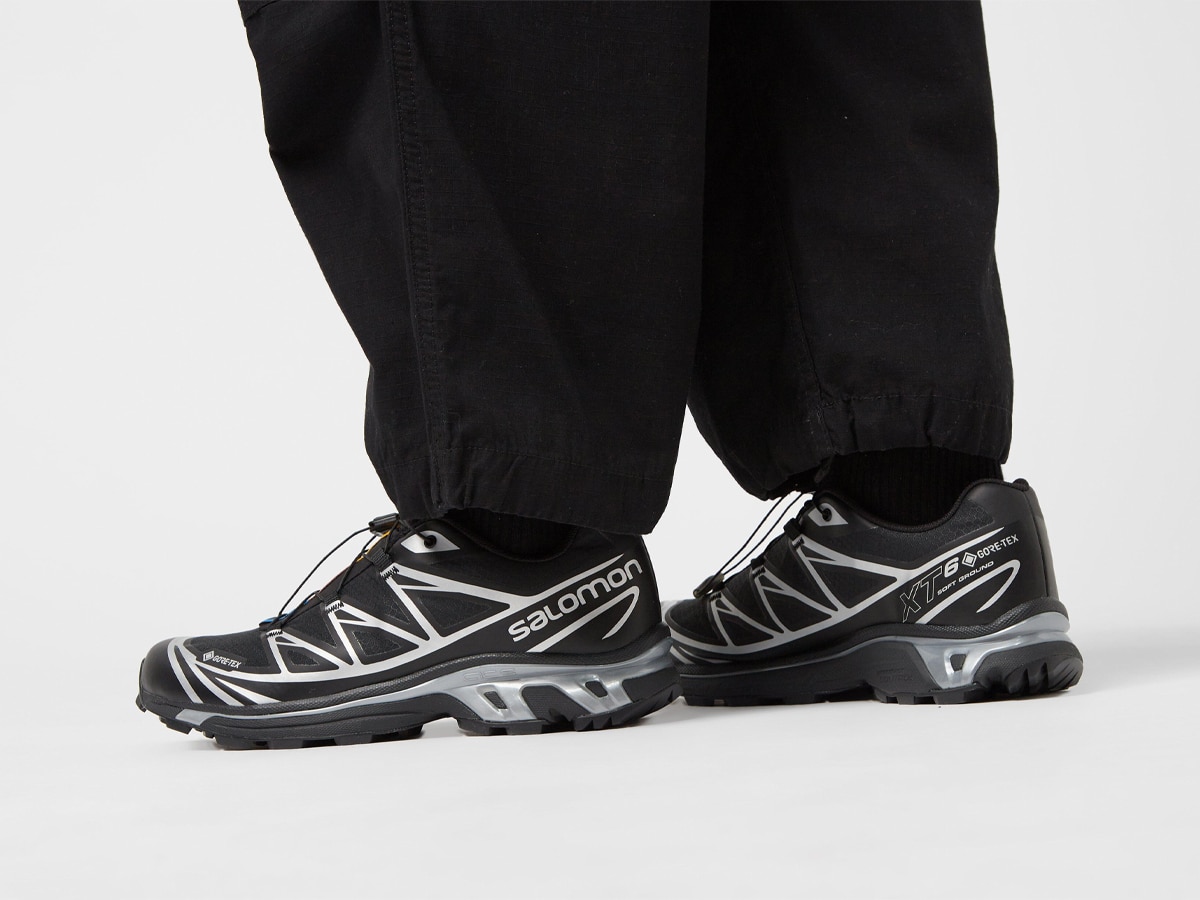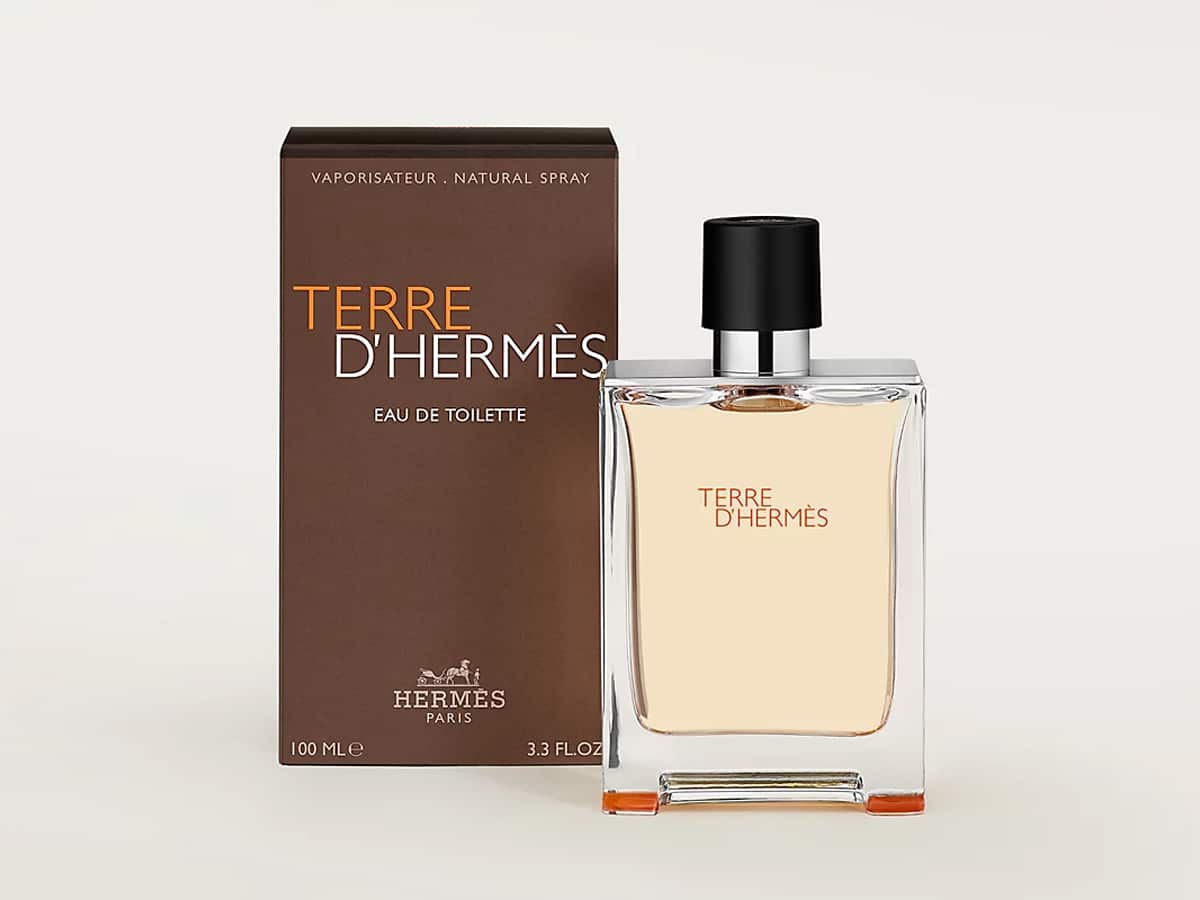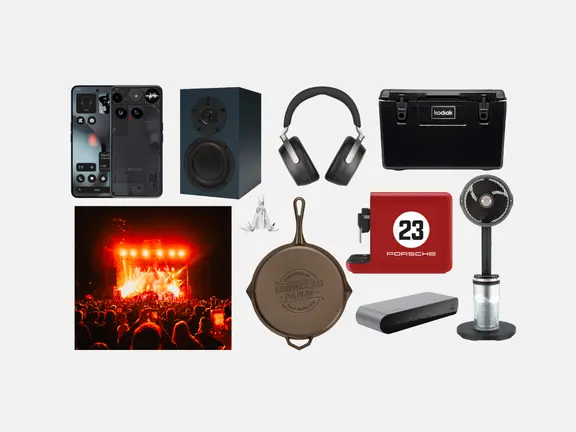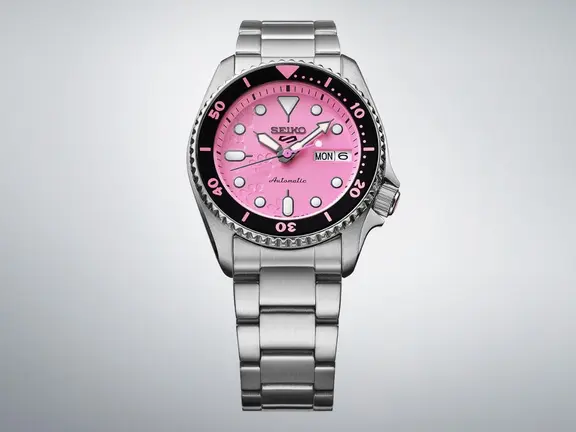
Published: Last Updated:
Readtime: 15 min
Every product is carefully selected by our editors and experts. If you buy from a link, we may earn a commission. Learn more. For more information on how we test products, click here.
Winter isn’t coming, it’s here. That means it’s about time you start thinking about jumping ahead of the trends and transforming your wardrobe into something a little more stylish. The best men’s winter fashion trends aren’t here for a season, they’re timeless, and we’ve chosen investment-level essentials for our article that promise to enhance your winter style now and into the future. Long-sleeve wool polo shirts, cashmere sweaters, and double-breasted wool overcoats are just bubbling at the surface, so let’s take a closer look.
Best Winter Fashion Essentials at a Glance
Highlights from our list include the following options:
- For shirting: Long-sleeve wool polo shirts
- For water-resistance: Shell jackets
- For something warm: Quilted liner jackets
- For something formal: Double-breasted wool suits
- For footwear: GORE-TEX sneakers from Salomon
- For boots: Boots
Now you’ve read our favourites, let’s check out the complete list.

1. Long-Sleeve Wool Polo Shirts
- Function: Smart-casual, layering piece
- Ideal use case: Weekend, office, dinner outings
- Styling tips: Wear under a blazer or with tailored trousers for a polished winter look
The long-sleeve polo shirt is back in time for the cooler months. We’ve chosen the L/S Polo in Cream Merino Wool from Charlton (AUD$425) here, but you could pick up similar shirts from brands like HUGO BOSS, Lacoste, and more. This particular shirt is made from Australian Merino wool, which makes it breathable in transitional weather, and merino fibre can absorb up to 35% of its weight in moisture, which is perfect for absorbing sweat from your skin when the weather warms up unexpectedly. Beyond the materials, we love the cut, collar, and the thick, heavy-gauge knit is great on its own or for layering with jackets. It features a 3/4 tortoise shell button down, ribbed cuffs and hem line to lock in warmth.

2. CPO Shirts
- Function: Shirt-jacket hybrid for insulation
- Ideal use case: Weekend wear, casual layers
- Styling tips: Layer over a tee or rollneck with raw denim and boots
First issued to Chief Petty Officers (CPOs) in the Navy in the 1930s, we love these overshirts for layering this winter. Their versatility makes them perfect for milder weather like that in Australia. Here, we chose the classic Buck Mason Felted Flannel CPO Shirt (USD$228), but other brands such as Fullcount out of Japan also deliver top-quality options. Using the Buck Mason shirt as your guide, look for merino wool, which is boiled down here to create a dense flannel that’s soft to the touch. Keep it true to the period with anchor motifs at the buttons, and select a heavyweight material that won’t mind being layered over the top of a classic white t-shirt. Versatile as it gets, these are a winter fashion essential!

3. Cashmere Sweaters
- Function: Lightweight warmth and softness
- Ideal use case: Smart or elevated casual settings
- Styling tips: Pair with wool trousers or jeans and a tailored coat
The classic cashmere sweater is another great choice for milder winters. It’s a second layer, but it could also be a third because of its lightweight construction. We’ve chosen Uniqlo’s 100% Cashmere Crew Neck Sweater (AUD$129.90) for this article because the quality meets the value-for-money proposition. However, you could also look up the market at brands like Venroy, Jac + Jack, and even Zegna, which create the best cashmere pieces on earth. Uniqlo selects a perfect yarn thickness and knit tension for a premium feel in-hand. Importantly, you’ll want to ensure you hand-wash these items as they can be a little fiddly, but the brand has thought about a special pilling-resistant process.

4. Shell Jackets
- Function: Weather protection (wind/rain)
- Ideal use case: Commuting, travel, outdoor activities, streetwear
- Styling tips: Wear over fleece or merino base layers for breathable warmth
It wouldn’t be winter without a shell jacket, and the Arc’teryx Beta AR (AUD$1,000) is the shell to end all shell jackets. Made from a light, packable, highly versatile GORE-TEX PRO material, it’s designed for the mountain, but like most owners, we’ve been wearing ours around the streets of Sydney. Importantly, this jacket isn’t warm on its own, meaning you’ll have to layer it with a crew neck sweater, pullover, or similar to stay warm, but it will add a layer of protection from rain and the wind because of the GORE-TEX PRO.
Of course, it’s hard to ignore the extreme price tag attached to an Arc’teryx shell, but you can also look at brands like Outdoor Research, which create similar GORE-TEX shell jackets for a fraction of the cost. You won’t, however, have a dead bird logo on the front telling everyone how seriously you take your weekend hikes.

5. Quilted Liner Jackets
- Function: Insulating midlayer or light outerwear
- Ideal use case: Transitional weather, city layering
- Styling tips: Wear under overcoats or solo with a scarf for mild winter days
If you make one addition to your wardrobe from our list, make it a quilted liner jacket. Originally designed as a zip-in insert for shell and canvas jackets, the liner is a versatile winter essential that takes all of the best parts of a puffer jacket and distils them down into a wearable, thinner, more layer-friendly design. Of course, if you’re shivering on the streets of Vancouver, this won’t cut the mustard, but for warmer winters like those in Australia, it’s perfectly suited to the occasion. We chose the Carhartt WIP Myton Liner (AUD$389.95) here because it’s water-repellent, diamond-quilted, and features unique details like a rib-knit collar and cuffs. However, brands like Uniqlo and Norse Projects also make great alternatives.

6. Heavy Weight Sweaters
- Function: Core warmth, textured layering
- Ideal use case: Cold days, rustic or workwear-inspired outfits
- Styling tips: Combine with selvedge denim and a parka or topcoat
If you open your wardrobe and find a lightweight, wrinkled hooded sweater worn to within an inch of its own life, do yourself a favour and throw it out (recycle it), and replace it with something like this super-weighted hoodie from Lady White Co. (AUD$368). It doesn’t come cheap, but it’s made from custom 18-ounce French terry, which is then knit, cut, and sewn in Los Angeles, California. You haven’t felt a hoodie like this before, but if you’re shopping on a budget, let it be your guide. Look for a double-faced hood finished with overlocked edges, crossover front neck, and most importantly, make sure it’s preshrunk.

7. Lightweight Pullovers
- Function: Flexible layering base
- Ideal use case: Office layering or indoor/outdoor wear
- Styling tips: Great under jackets or worn over a collared shirt
Next to the hoodie, a lightweight pullover is another staple for any man’s winter wardrobe. Not only is it perfect for layering, but it’s a fashionable item in its own right, and you’ll find yourself leaning towards it on weekends when running errands and heading to the local cafe for a coffee. Choose a lightweight option made from a recycled polyester material, such as this classic Patagonia Lightweight Synchilla Snap-T Pullover (AUD$199.95) featured here. It features a four-snap recycled nylon front placket and stand-up collar for a timeless look, and has a longer hip length for additional coverage around your backside. Layer it with a waterproof shell jacket, and you’re ready for anything winter can throw at you.

8. Printed Leather Jackets
- Function: Statement piece with edge
- Ideal use case: Evenings out, fashion-forward looks
- Styling tips: Let the jacket shine, we recommend keeping the rest of the outfit simple
While the humble leather jacket will always be a winter style essential, the panelled, coloured options are here, and it’s a trend that we’re on board with. The Aimé Leon Dore Panelled Leather Bomber Jacket (AUD$3,000) featured here is one of our favourite options, but it comes at a cost that reflects its desirability. Now sold out, brands like Balenciaga and REISS have all released similar riffs on this aesthetic, but none come cheap. We recommend layering this piece with a solid coloured hoodie, chino trousers, and sneakers or loafers, depending on the occasion.

9. Double-Breasted Wool Overcoats
- Function: Formal outerwear, warmth and structure
- Ideal use case: Business, formal events, winter weddings
- Styling tips: Choose neutral tones like camel or grey
The overcoat is arguably THE winter fashion essential, but here’s what you should look for when buying one. Start with a double-breasted option, which is certainly on-trend, but a timeless essential nonetheless. Then, look for a wool fabric, preferably a 100% wool option like the coat we’ve selected from Percival. It features an oversized fit, long length, and a large collar that makes it perfect for semi-formal wear, smart casual, and even some spring outfits with a collared shirt underneath. Jeans and chino trousers would be our choice of pants.

10. Double-Breasted Wool Suits
- Function: Classic winter tailoring
- Ideal use case: Office, formal functions
- Styling tips: Pair with turtleneck or shirt and tie
When the double-breasted overcoat isn’t enough and the dress code calls for something more formal, the double-breasted wool suit is your best option. Easy to find these days, brands like REISS (AUD$675) have this style available in many different colour options, but we recommend an earthy, tonal colour for winter, black, or blue. Typically made with a combination of wool and polyester, look for a suit with a six-button front, peak lapels, double vent at the rear, and soft shoulders for comfort. Alternatively, head to your tailor and ask for a fitting.

11. Raw Denim
- Function: Durable and insulating legwear
- Ideal use case: Every day winter wear
- Styling tips: Pairs well with flannel, sweaters, and jackets
orSlow is one of the best in denim jeans, and the Super Dad’s (AUD$405) fit is their widest pant yet. Previously, the Dad’s Fit was the brand’s most relaxed cut, but we love the width of these this winter, and they’re not too oversized by today’s standards. Made in Japan with custom hardware and a 5-pocket design, the jeans are designed to be worn, and worn hard. Wear them with a white t-shirt and boots when the weather is a little warmer, or pair them with a trench coat for colder weather. Underneath, you’ll want to slide some boots, not sneakers.

12. Boots
- Function: Rugged footwear for traction and warmth
- Ideal use case: Daily wear, semi-formal, wet or snowy conditions
- Styling tips: Opt for leather or suede with rubber soles; style with wool socks and denim
Time for some footwear, and what better way to start than with a pair of boots? It’s winter after all, and the Our Legacy Camion (AUD$950) remains the most desirable boot in the game, next to a pair of R.M. Williams, of course. Made in the USA from Italian calf leather, the Vibram outsole provides durability and grip, while the Kilger leather midsole from Germany provides all-day comfort. Of course, the price is up there at nearly a grand, but you’ll get a life of wear from these with outstanding versatility. Wear them with a suit or jeans on the weekend, the design is timeless.

13. GORE-TEX Sneakers
- Function: Waterproof comfort and grip
- Ideal use case: Urban commuting, weekend casual
- Styling tips: Match with technical outerwear or streetwear-inspired fits
When it’s time to cop sneakers, you have more than a few choices. Ultimately, the best decision is a pair of Salomon’s, XT-6 to be specific, and why not opt for the GORE-TEX model (AUD$340) while you’re there to gain some added water resistance and durability. You can hardly walk around any major city without spotting a pair of these on each block, and it’s easy to see why. They pair well with trousers, shorts, cargo pants, double-knees, and the list goes on and on. Like a pair of quality boots, these will stand up to the test of time.

14. Fisherman Beanies
- Function: Head warmth, minimal, classic style
- Ideal use case: Outdoor wear, casual winter outfits
- Styling tips: Stick to solid neutral colours for versatility, minimal logos
The Nara prefecture of Japan is known for its vintage knitting machines, and this roll-up fisherman-style beanie from Rototo (AUD$100) is one of our favourites. It features a 100% cotton knit construction for comfort and breathability, and that’s combined with a shallow fitting so it sits on your head like it should. No beanie should be covering your ears these days, so if you’re looking to invest in some warmth for your head, this is a great shout.

15. Fragrances
- Function: Seasonal scent worn to express a certain mood
- Ideal use case: Daily grooming, evening wear
- Styling tips: Opt for warm, woody, or spicy notes—like oud, amber, tobacco, or sandalwood
Lastly, think about your scent. It’s the cherry on top of any great outfit, and we’ve tried and tested the best winter fragrances for men to help you find your next signature scent for the cooler months. Look for a spicier, woody, bourbon and vanilla-driven cologne that adds a layer of complexity to your ensemble. These fragrances are long-lasting and perfect for Saturday morning coffee runs and steak lunches.

Frequently Asked Questions About Winter Style for Men
How can I layer clothes without looking bulky?
Answer: We always recommend starting with a lightweight base layer in winter. Choose a t-shirt made from merino wool or similar, or even throw a thermal base-layer on if necessary (Uniqlo Heat Tech is one we can recommend). Then, find a comfortable mid-layer, a cashmere sweater, a crew neck made from cotton, or even a hoodie, depending on the occasion. Finally, add a coat or jacket. Traditionally, three visible layers are enough, but if the weather is particularly cold, an overcoat can hide layers without adding too much visual weight.
What type of coat should I invest in?
Answer: The trench coat is the best coat to invest in. You can choose what type of trench it is that you want, but choose a high-quality, mostly cotton or wool blend coat that’s long and has a large collar. You can choose a double-breasted coat for a formal look, but the single-breasted coat is what we’d call essential.
What stylish options are there for extreme cold weather?
Answer: If the weather is particularly cold, think about adding a thermal base layer underneath your shirt. Don’t add more than three visible layers, and having a technical fabric against your skin to maintain heat retention is more effective than adding multiple layers on the outside. If you don’t have a puffer jacket, that’s another great piece to invest in, and you can’t look past the classic The North Face Nuptse for this purpose. Shell jackets, like those from Arc’tyrex, do a great job against water and wind, if that’s what you’re dealing with.
What colours work best for winter fashion?
Answer: The simple answer is black, but there’s more to winter fashion colours than meets the eye. You can choose neutral tones (charcoal, navy, black, camel, and grey) for a versatile look, but earth tones (olive, rust, chocolate brown, and tan) add warmth to your outfit. Once you’ve figured out the basics, try and weave in some cool tones (dark green, burgundy, and navy blue) for a seasonal look, and even try a monochrome look for a streamlined, sophisticated style. Colours like burnt orange and yellow should be woven throughout the layers of your outfit, where possible.
Can I still wear sneakers in winter?
Answer: If you’re from a milder climate like Australia, then yes, sneakers are perfectly fine to wear in winter. Those living in other parts of the world where snow and ice are an issue should invest in GORE-TEX boots, or sneakers at the very least. Danner makes great waterproof leather boots, and the Salomon XT-6 GORE-TEX is what we’d recommend for sneakers.


































Comments
We love hearing from you. or to leave a comment.